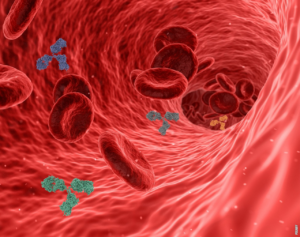The Marvel of the Ear
The human ear is a remarkable organ that allows us to experience the world in a unique way. From the chirping of birds to the rhythm of music, our ears enable us to perceive and enjoy a symphony of sounds.
The Anatomy of the Ear
Before delving into how the ear works, let’s first understand its anatomy. The ear can be divided into three main parts: the outer ear, the middle ear, and the inner ear.
The outer ear consists of the pinna, the visible part of the ear, and the ear canal. Its main function is to collect sound waves and direct them towards the middle ear.
In the middle ear, we find the eardrum and three tiny bones called the ossicles: the malleus, incus, and stapes. When sound waves reach the eardrum, they cause it to vibrate. These vibrations are then transmitted through the ossicles to the inner ear.
The inner ear is a complex structure that contains the cochlea, vestibular system, and auditory nerve. The cochlea is responsible for converting sound vibrations into electrical signals, which are then sent to the brain for interpretation.
The Hearing Process
So, how does the ear actually work? Let’s break it down step by step.
1. Sound waves enter the outer ear and travel down the ear canal.
2. The sound waves reach the eardrum and cause it to vibrate.
3. The vibrations are transmitted through the ossicles in the middle ear.
4. The stapes, the last of the three ossicles, transfers the vibrations to the oval window, a membrane that separates the middle ear from the inner ear.
5. The oval window vibrations create fluid movement in the cochlea.
6. Inside the cochlea, thousands of tiny hair cells convert the fluid movement into electrical signals.
7. These electrical signals are then transmitted to the brain via the auditory nerve.
8. The brain processes the signals and interprets them as sound.
Protecting Our Ears
Given the vital role our ears play in our daily lives, it’s important to take care of them. Here are some tips for maintaining ear health:
– Avoid exposure to loud noises for prolonged periods. If you cannot avoid them, consider using ear protection.
– Clean your ears gently and avoid inserting objects like cotton swabs into the ear canal.
– Be cautious when listening to music through headphones or earbuds, and keep the volume at a moderate level.
– If you experience any hearing loss or ear-related issues, consult a healthcare professional.
A Symphony of Sound
The ear is an intricate and awe-inspiring organ that allows us to connect with the world through sound. By understanding how it works and taking steps to protect it, we can continue to enjoy the beautiful melodies and harmonies that surround us every day.
Post



